 I can't remember why we chose this particular trail but it was about time we got around to doing it. As I recall we just felt in was time for a Ko'olaupoko trail after spending so much time in the Ko'olauloa sections of our favorite mountains. This 7 mile round trip ungraded ridge trail seemed to fit the bill. After skimming though the trail Stuart Ball's first edition of Hiking O'ahu I had just enough information to get us to the trail head and knew to expect a rolling series of ups and downs that would either end at the summit of Pu'u Kainawa‘aunui or we could continue via the Ko'olau Summit Ridge Trail another .7 miles over to Pu'u Lanipo.
I can't remember why we chose this particular trail but it was about time we got around to doing it. As I recall we just felt in was time for a Ko'olaupoko trail after spending so much time in the Ko'olauloa sections of our favorite mountains. This 7 mile round trip ungraded ridge trail seemed to fit the bill. After skimming though the trail Stuart Ball's first edition of Hiking O'ahu I had just enough information to get us to the trail head and knew to expect a rolling series of ups and downs that would either end at the summit of Pu'u Kainawa‘aunui or we could continue via the Ko'olau Summit Ridge Trail another .7 miles over to Pu'u Lanipo.For a little backgound, Mau'umae is an old volcanic cone along the the Diamond Head Rift Zone. Along the same rift are the results of later eruptions which created Kaimuki and the world famous Diamond Head volcanic formations. This small cone was created by a dry, meaning above sea level, lava fountain during the rejuvenation stage of the Ko'olau Volcano known as the Honolulu Volcanic Series which occurred between 800,000 and 30,000 years ago. It's name comes from a legendary wrestling match between the gods Kanaloa and Kane who are said to have trampled the grass causing it to wilt.
To beat traffic we agreed to meet at Maunalani Circle at around 6:30am. The sun had just risen shortly before I arrived courtesy of Google Navigation and it took a few minutes to find the trail head in between two chain link fences. II and I set off on the trail and after just a few yards we saw the first big dip of the day.
The wide angle lens masks the drop but it's fairly significant. The descent is fairly steep but completely manageable but I found the climb on the other side back up to the ridge to be long and grueling for the start of a hike. The cloudy Ko'olau summit was a bit discouraging but since we'd been slacking this month I figured I needed the exercise anyway.
After reaching the bottom of the first dip we started the longer climb to regain all the elevation we'd just given up. Perhaps a third of the way up there's a nice bench to take a break. The memorial placard offered some good advice.

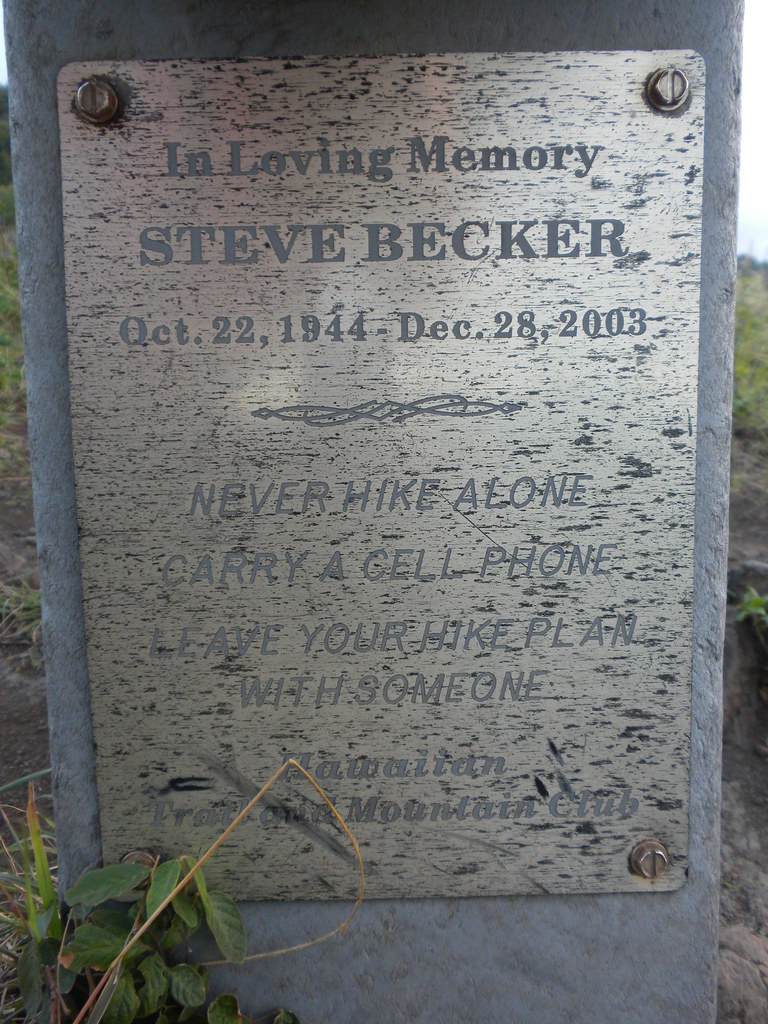
There were some good views of Palolo Valley below and we could see the Mu Ryang Sa Buddhist Temple my wife and I had visited back in September. I have to thank Wayde Fishman of Wade's World for tipping us off about this hidden secret that most people don't know about.
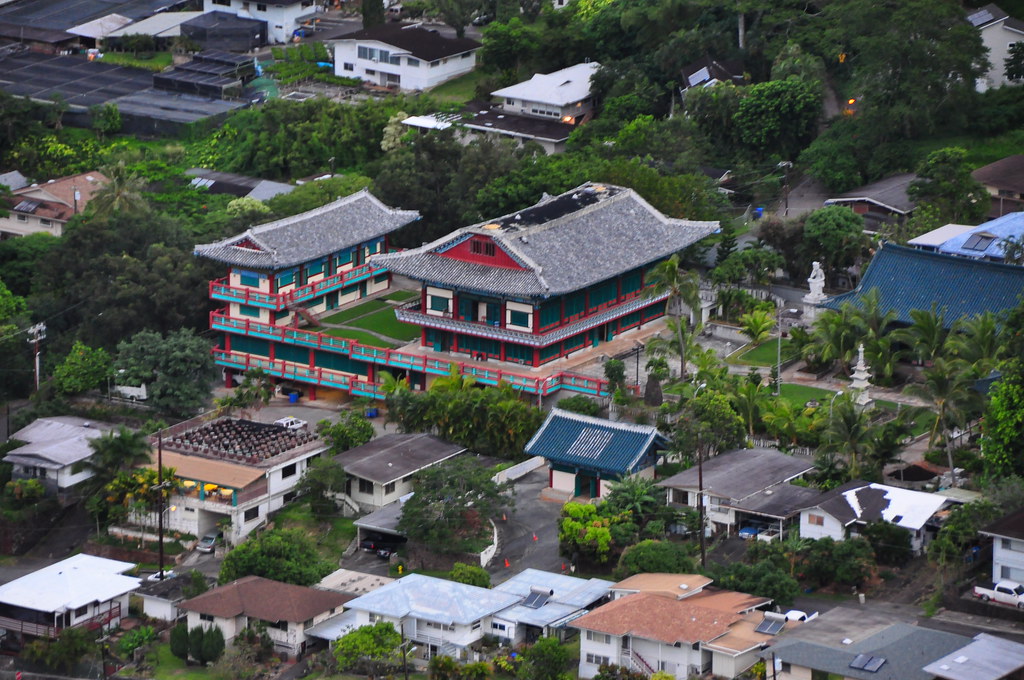 |
| Sherry's blog about our visit in September |
Despite the numerous alien plants along the ridge there were some native plants along the way too. Early on we passed some Ko'oko'olau with it's cheerful yellow flowers and some Naupaka kuahiwi.
Nearing the end of the the climb we approached a badly eroded section with a small bypass trail on the right side. We paused to look back towards Honolulu and a passing shower created a small broken rainbow.
Almost immediately after the eroded section we got a preview of the rich native forest we'd be seeing for the rest of the day.
The trail here was very wall manicured, almost like a green sidewalk though the forest bordered by uluhe. We passed numerous 'iliahi and koa in this area.
Here we made an interesting discovery, a number of pine trees which I've never seen in the Ko'olaus. The experts at Bishop Museum have decided it must be Pinus elliotii, commonly called slash pine, which is common in the US Southeastern region. It does look a lot like the pines I used to see when I lived in Jacksonville, Florida.
The pines also marked the end of the biggest ascent of the day.
We stopped to take a short break at a cleared area.
Making our way up the ridge we paused at a second rest area near some Cook Pines. After that the trail became a little more overgrown and the uluhe closed in. The dead uluhe stems scratched mercilessly at us.
From the pines we descended gently into a now almost completely native forest filled with Koa, Ohia, and, of course, more uluhe.
Off to the side of the trail I noticed some beautiful red Lehua flowers. At first glance they appeared to be just the typical red so commonly seen trail side but there was something that didn't seem right about the shape of the tree so I ventured into the uluhe for a closer look.. Sure enough it was Metrosideros macropus, a species of Ohia only found on O'ahu. Although the literature says that M. macropus is usually yellow and occasionally red, I've found that in the eastern Ko'olaus the reverse is true. This red variety is usually found near Lanihuli where I and others speculate it has hybridized with M. tremuloides, Lehau Ahihi, which that area is famous for. This is the first time I've seen this species with red blooms so far east.
There are several characteristics that the experts use to identify this tree. Among them are the long petioles, (stems) of the leaves, leafy bracts, and attenuate scales. My own observations are that the blossoms are denser, the seeds are larger, and that the general appearance of the tree is more weepy looking. The trunk and branches seem to have a more boney look to them and the tree's shape is not a canopy like the other larger Ohia but looks more like it's Myrtle family cousin the Java Plum.
The upper right shot shows the leafy bracts which are those weird looking growths in the center. The unique leaf development of this species from other Ohia makes it easy for an amateur like me to identify it.
The upper right shows the attenuate scales which are the small leafy structures pressed tightly together. (upper left) Most of these will later develop into the leaves with the outermost becoming the bracts. The upper right shows this stage of growth. As time progresses the true leaves begin to take shape and then finally the branches and leaves of the new growth begin to take shape.
We passed through this Koa arch and into the longest section of large Ohia I've experienced in the eastern Ko'olaus.
 |
| Koa arch |
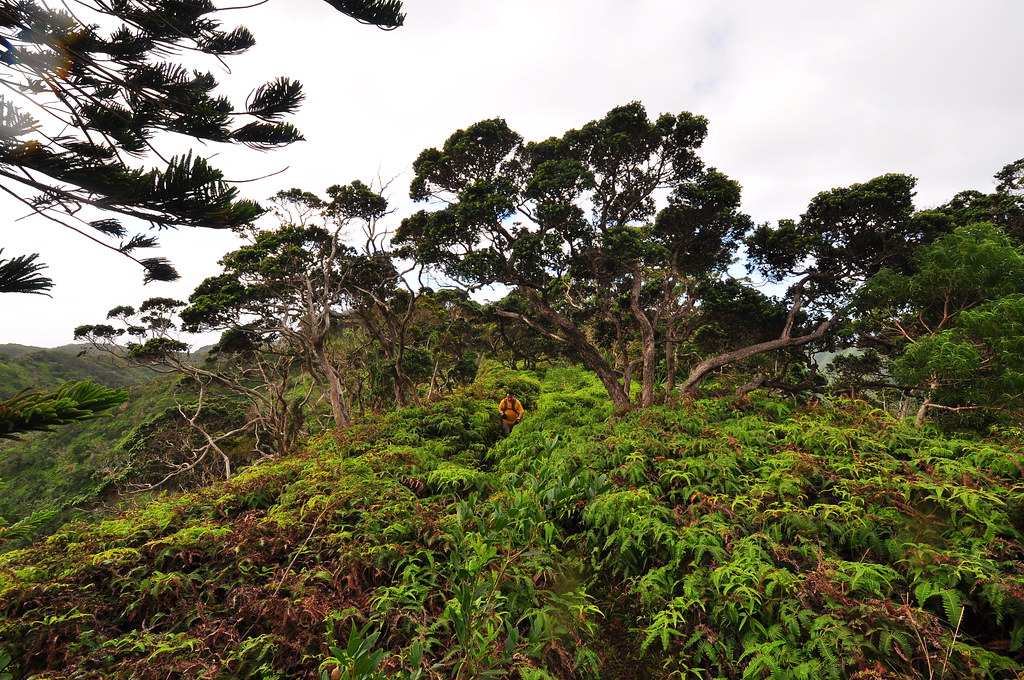 |
| Ohia forest |
 |
| Ka'au Crater |
The summit looked clouded in but as everyone who's done any of these ridge hikes knows the weather can change for the better or worse as you make your way up.
As we neared the upper sections of the trail we happened to come upon a small manono tree. Hedyotis fosbergii is a small endemic tree usually found in the upper reaches of the forest. This one had both flowers and fruit .
Further up the trail yet another great discovery, this yellow blossom on a dwarfed form of M. polymopha that I call "mini ohia". This little bush was in full bloom with many lehua mamomaking for a spectacular display.
Another endemic plant we noticed was this Aka'awa vine in various stages of bloom. This Smilax melastomifolia vine goes by several Hawaiian names hoi kuahiwi, aka'awa, pi'oi, uhi, ulehihi and is the host plant for the Hawaiian endemic moth species Scotorythra ortharcha who's caterpillars feed exclusively on the young leaves. The starchy root is also thought to have been a famine food for the Hawaiians.
By the time we reached the final climb to the summit the clouds had parted and we were treated to beautiful leeward views on the ridges down to the Manoa, Waikiki, and Honolulu.
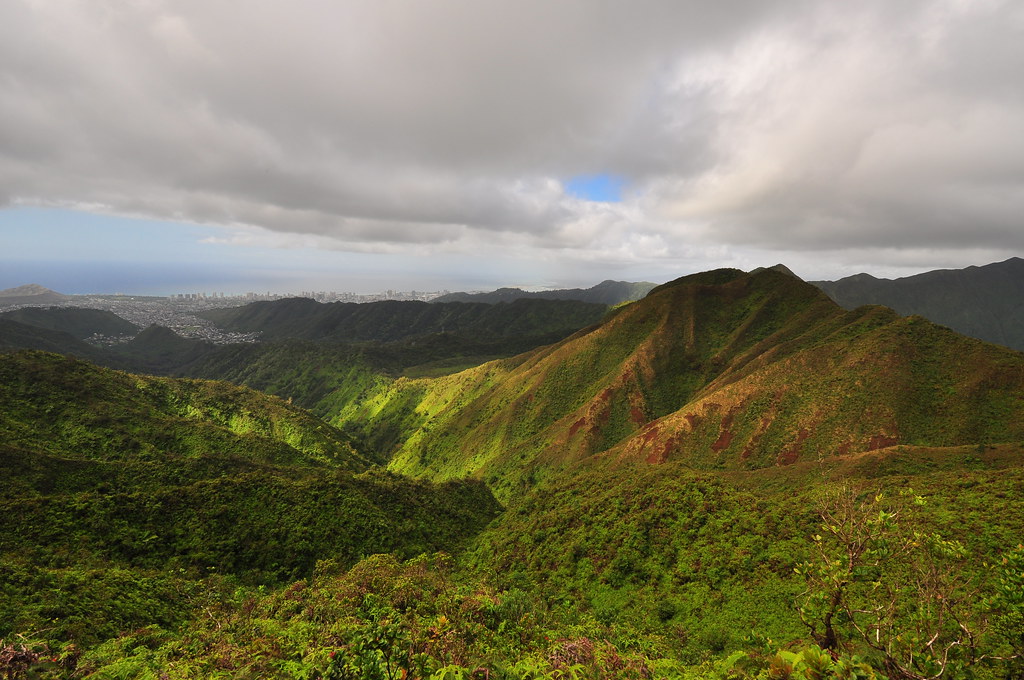 |
| South view |
Here we passed more of the "mini Ohia". Another trait this variant displays are often times smaller number of flowers per bloom. On the other varieties there are usually far more individual flowers that make up a Lehua blossom.
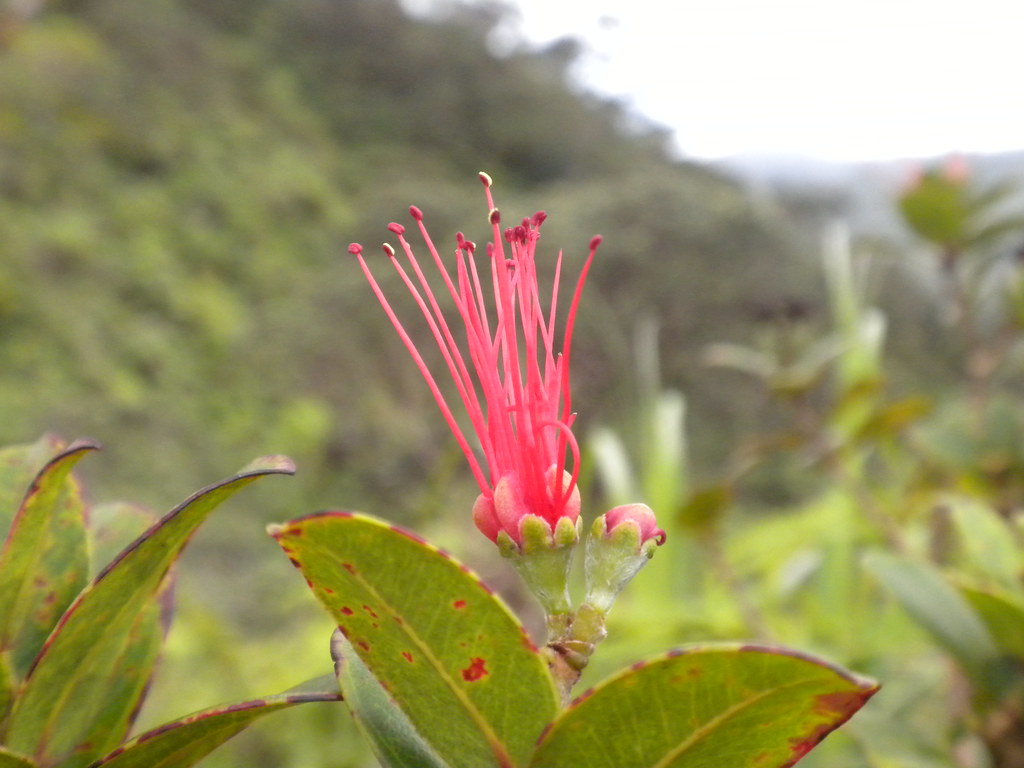
Topping out to the summit of Pu'u Kainawa‘aunui the views were simply awesome. The clouds hung high above us providing a nice back drop instead of obstructing the scenery. The weather at the summit is always a gamble and today we won big.
 |
| II takes in the view |
 |
| Awa'awaloa Summit |
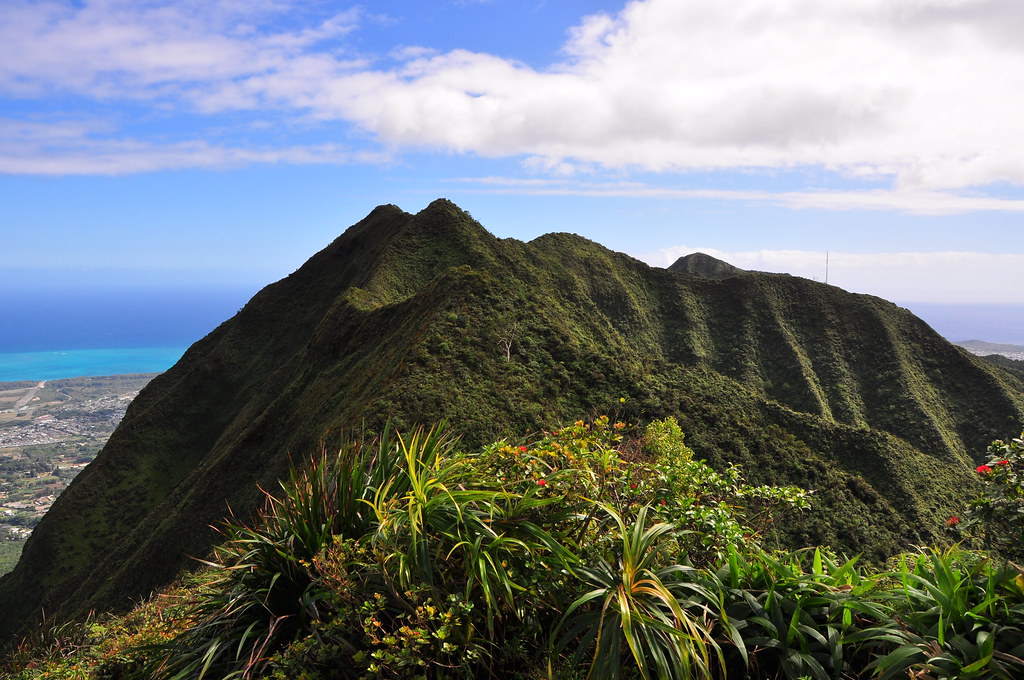 |
| Looking East to Lanipo |
 |
| Maunawili Valley, Olomana, and Kawainui Marsh among the sights from the summit. |
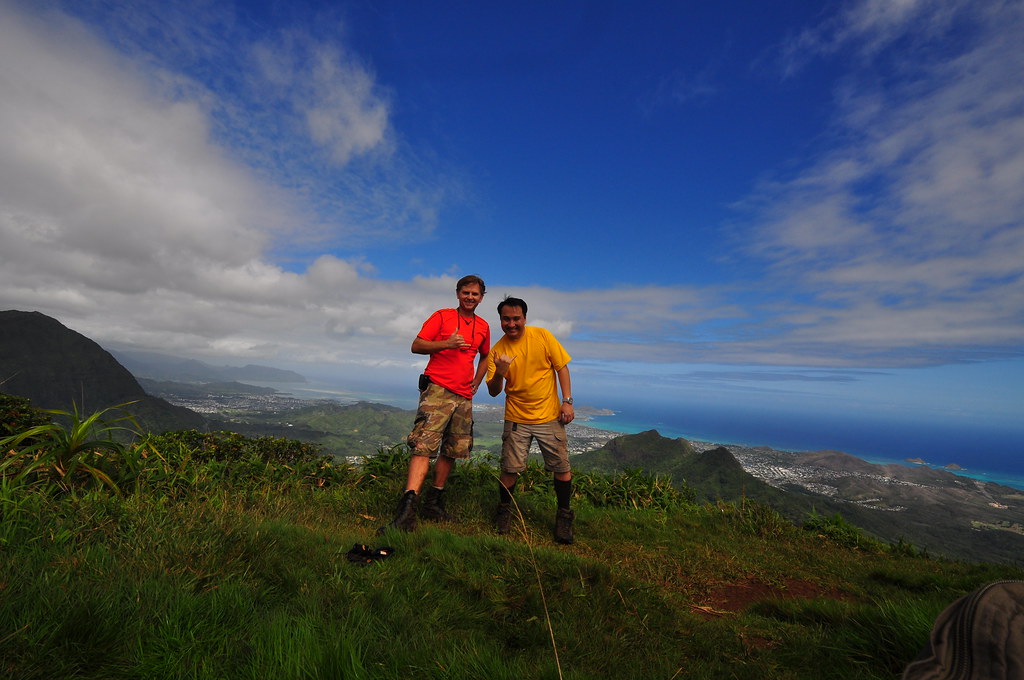 |
| XJ and II |
 |
| Mau'umae Ridge |
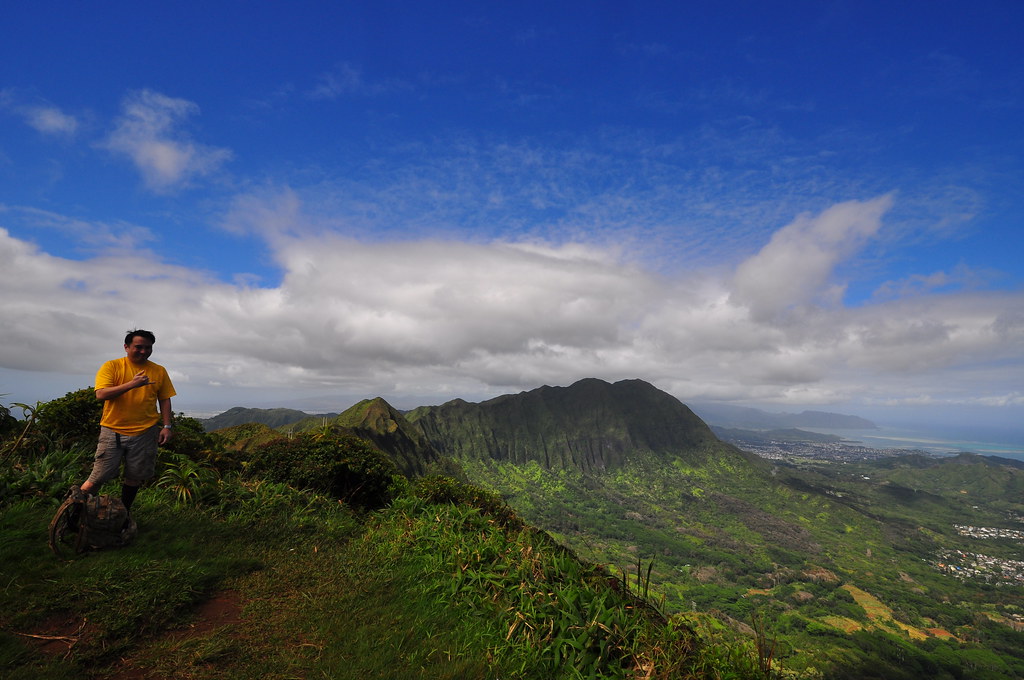 |
| II at the summit with the Eastern Ko'olaus laid out behind him. |
Sadly and regrettably, we did not take the sort trip over to Lanipo's Summit that we'd visited about a year earlier and all too soon it was time to head back down the way we'd come.
I'll spare you the details of the return trip as this is long enough already. However, I have to say that that first big descent when you're heading up to the summit is just as painful when you have to climb back out to the trail head!
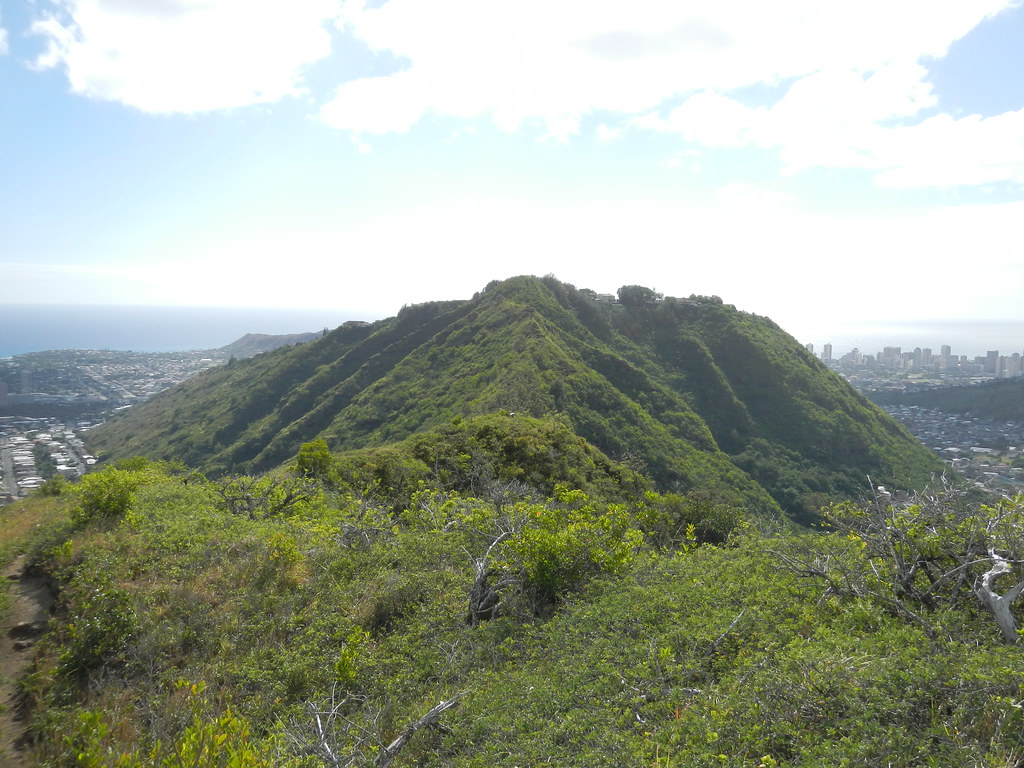 |
| The Big Dip to Mau'umae Cone |
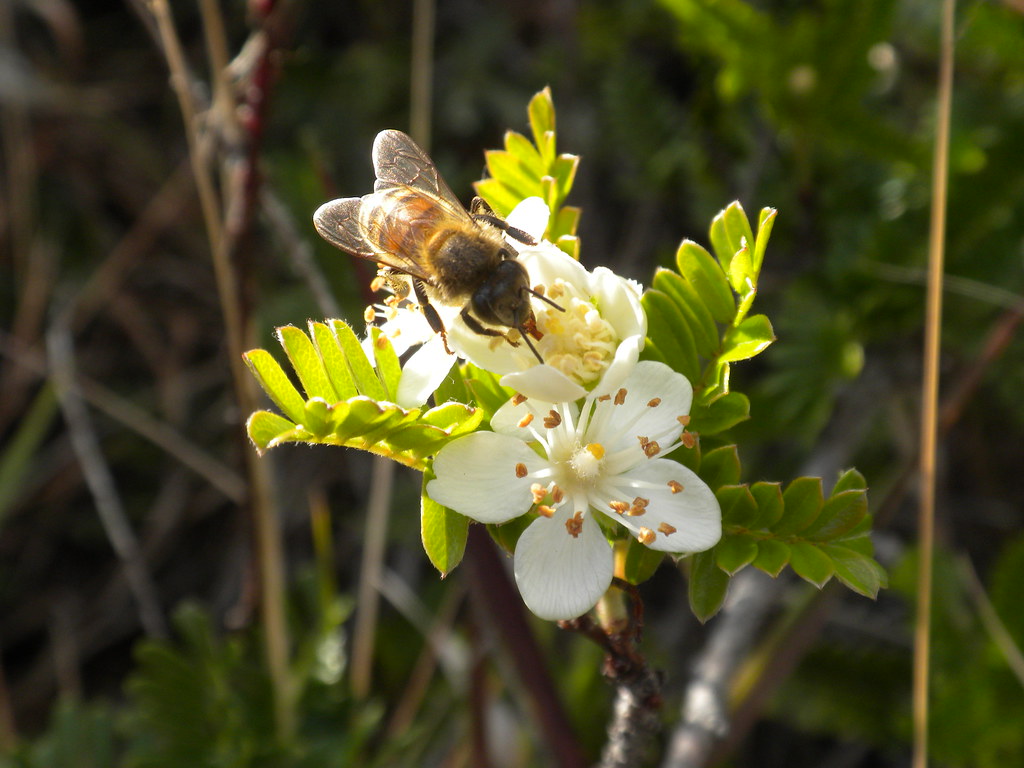 |
| Ulei flower with busy bee |
 |
| Strawberry Guava flower |
More pictures from this trail and others I've done can be viewed on Flickr. Aloha and Mahalo for reading!
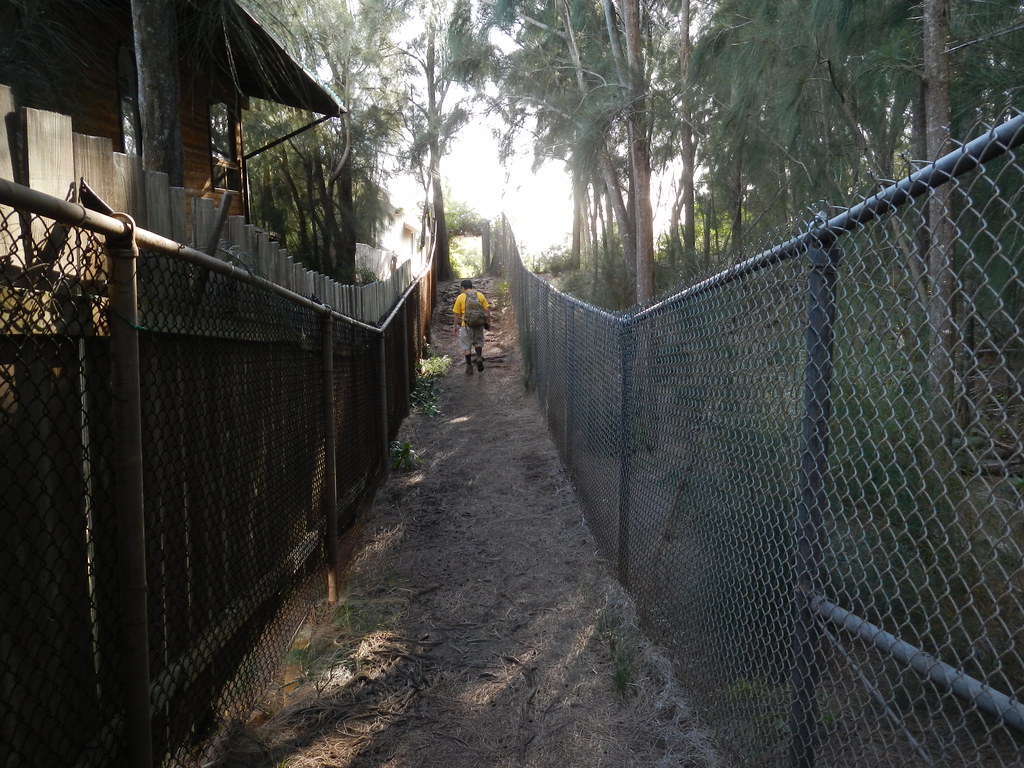 |
| The finish line! |
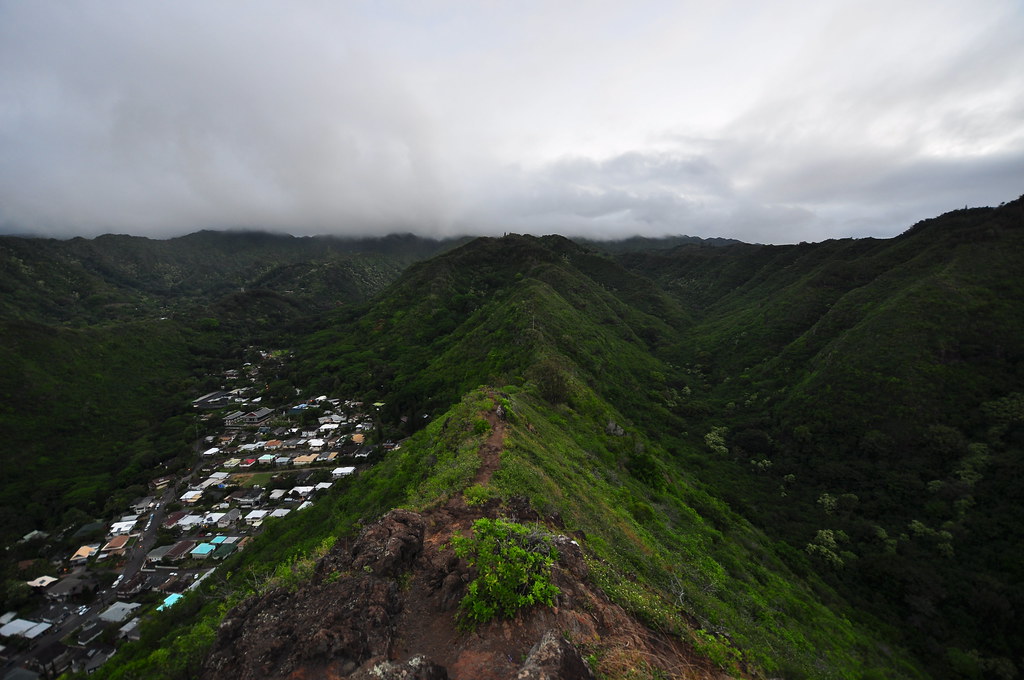
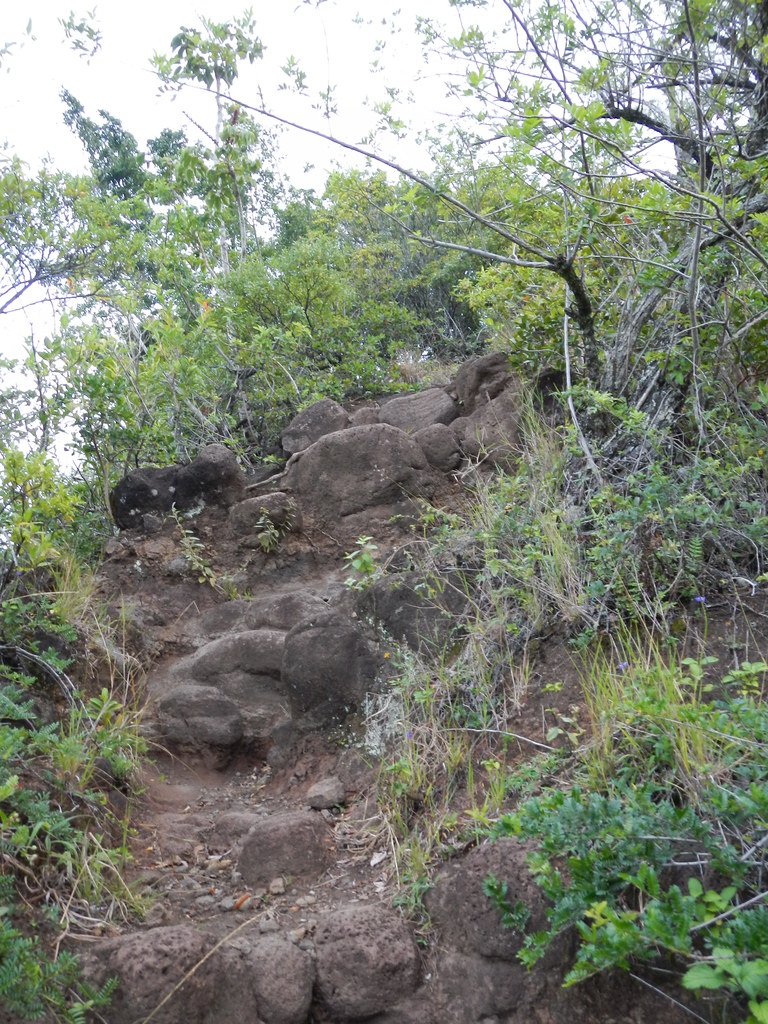


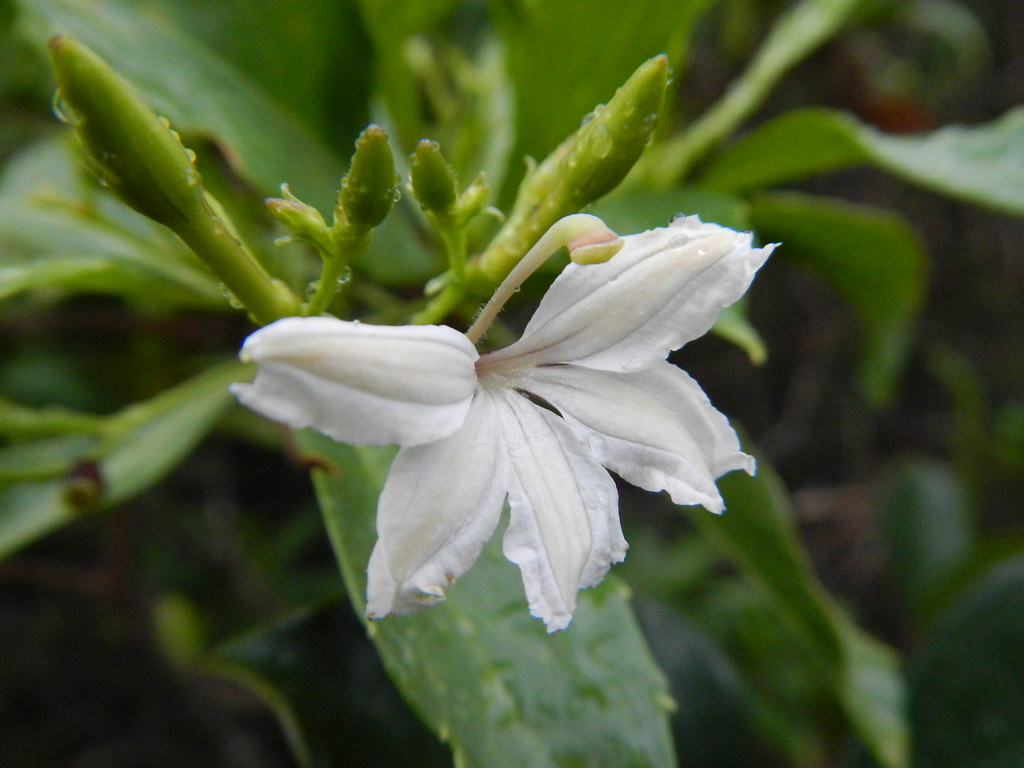
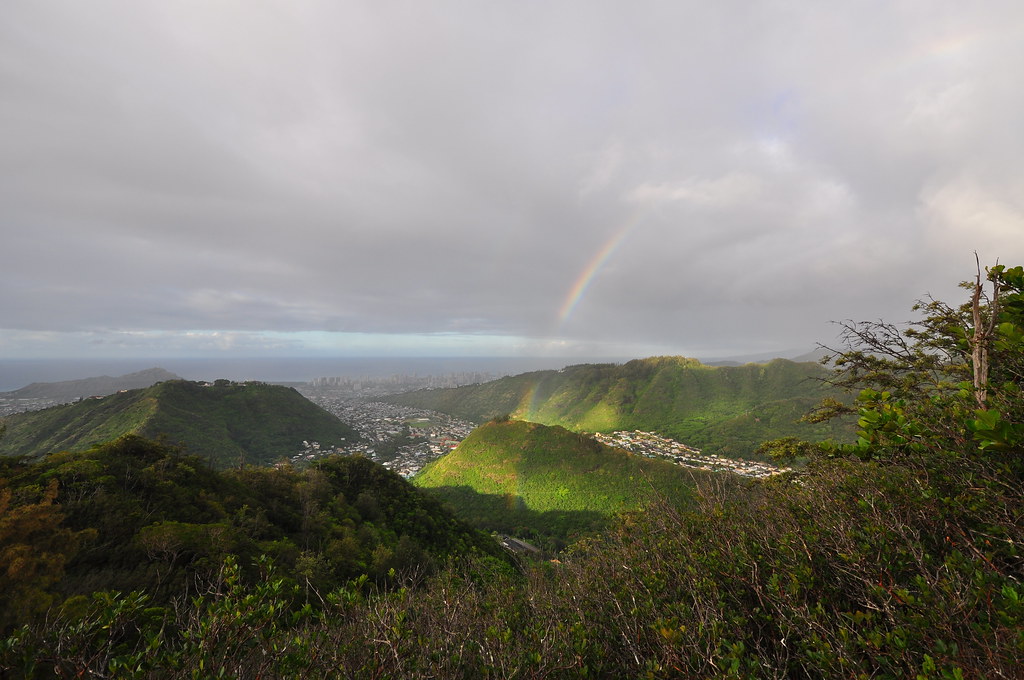
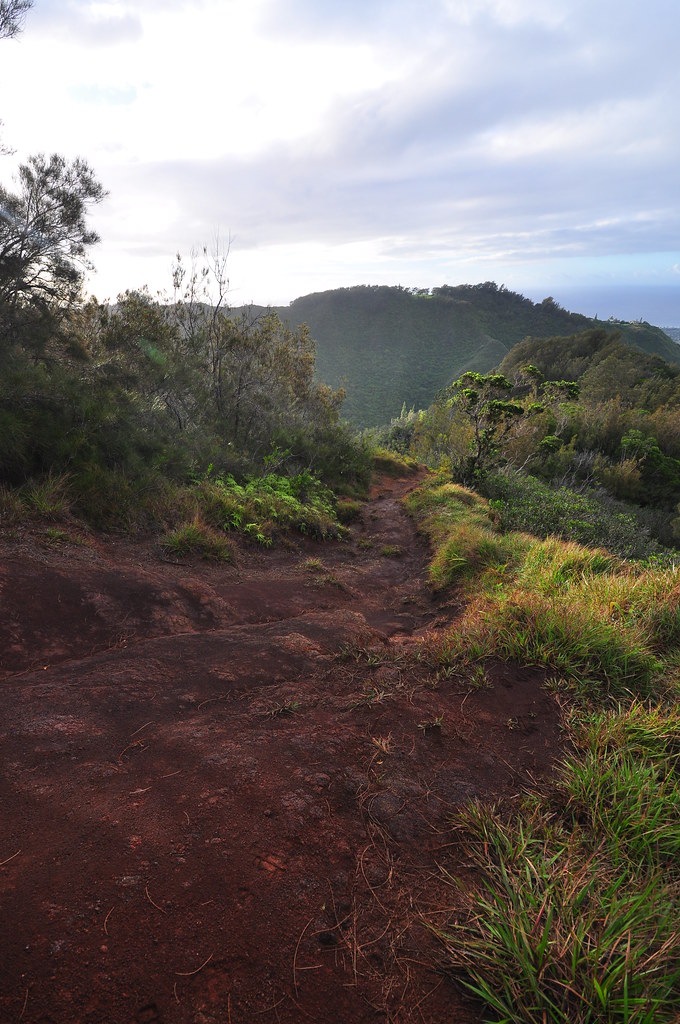

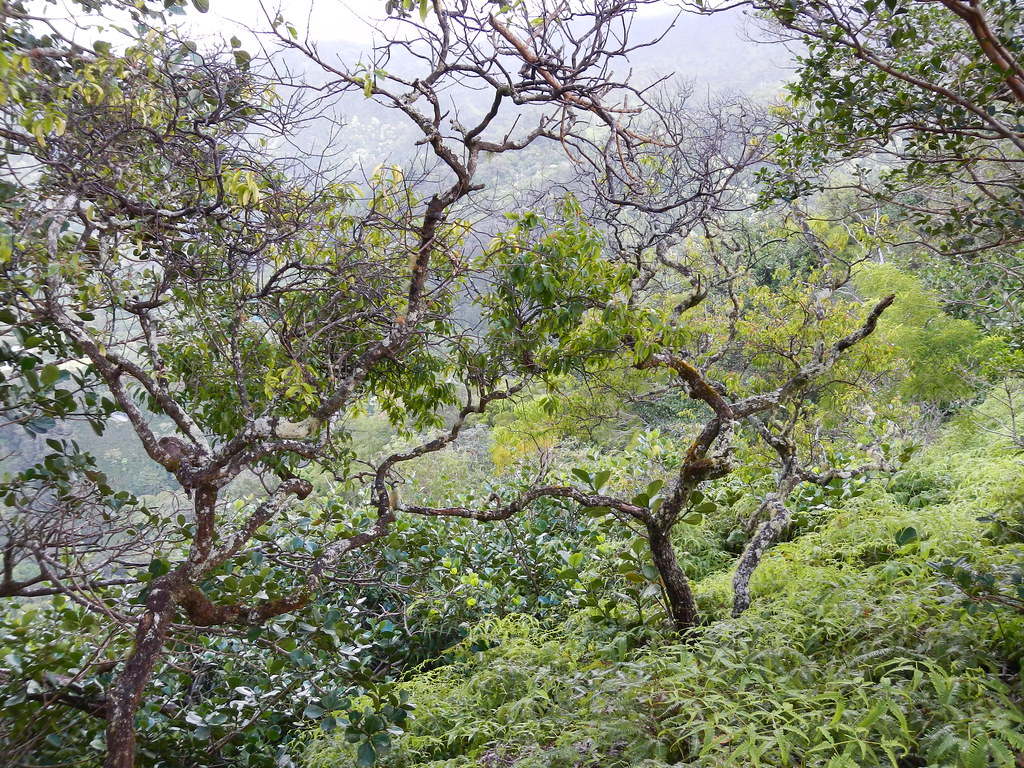
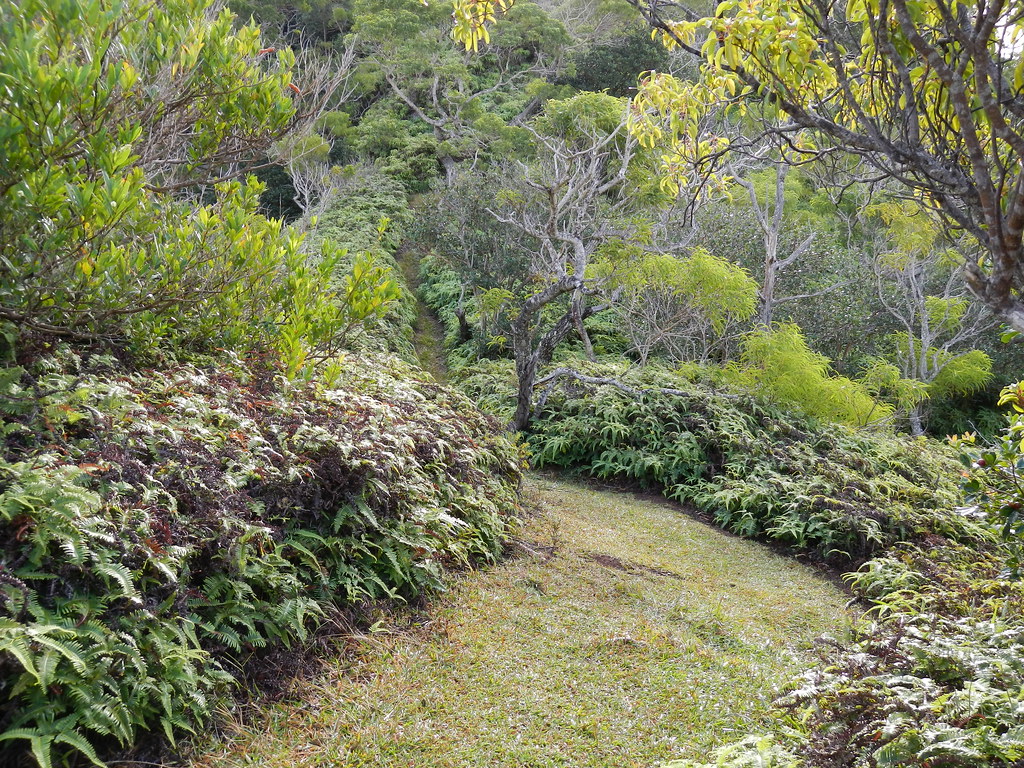

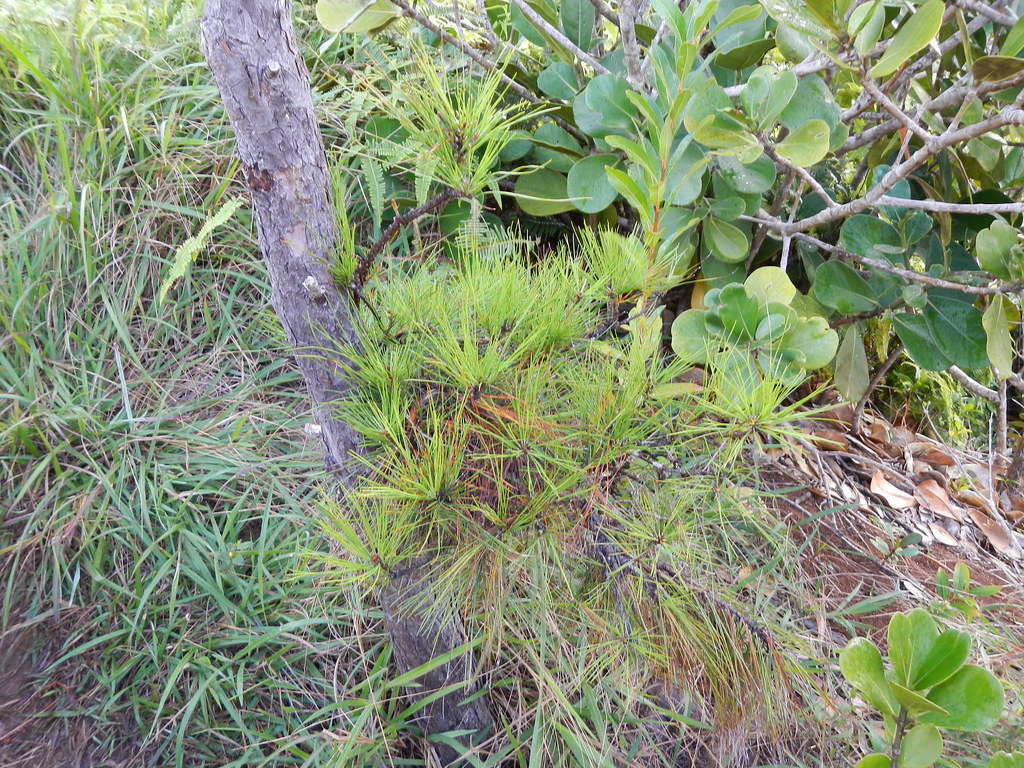

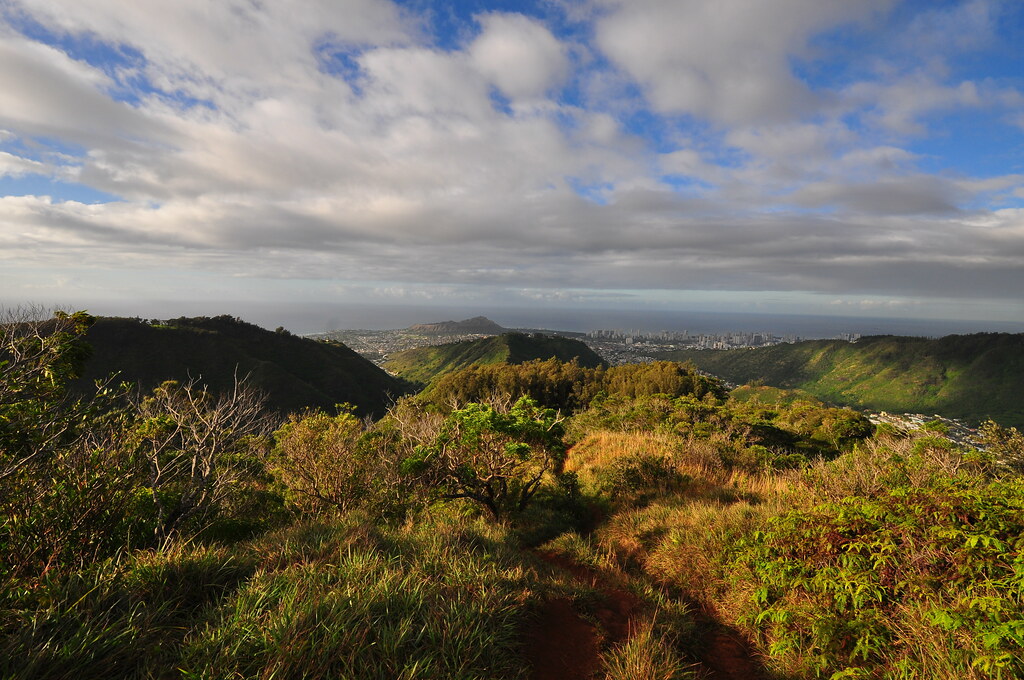
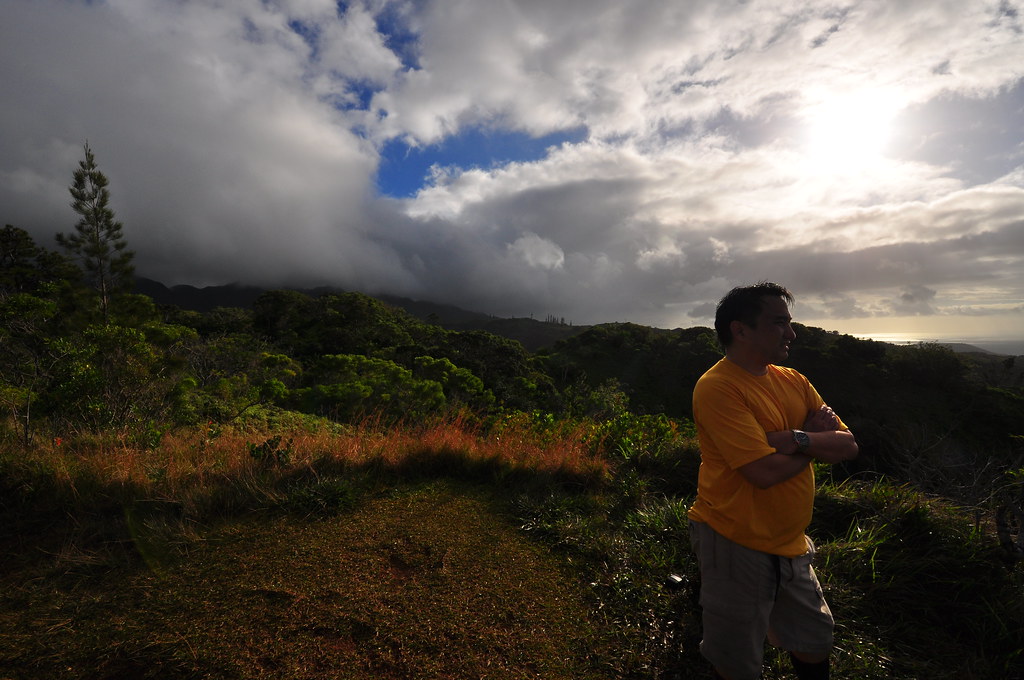
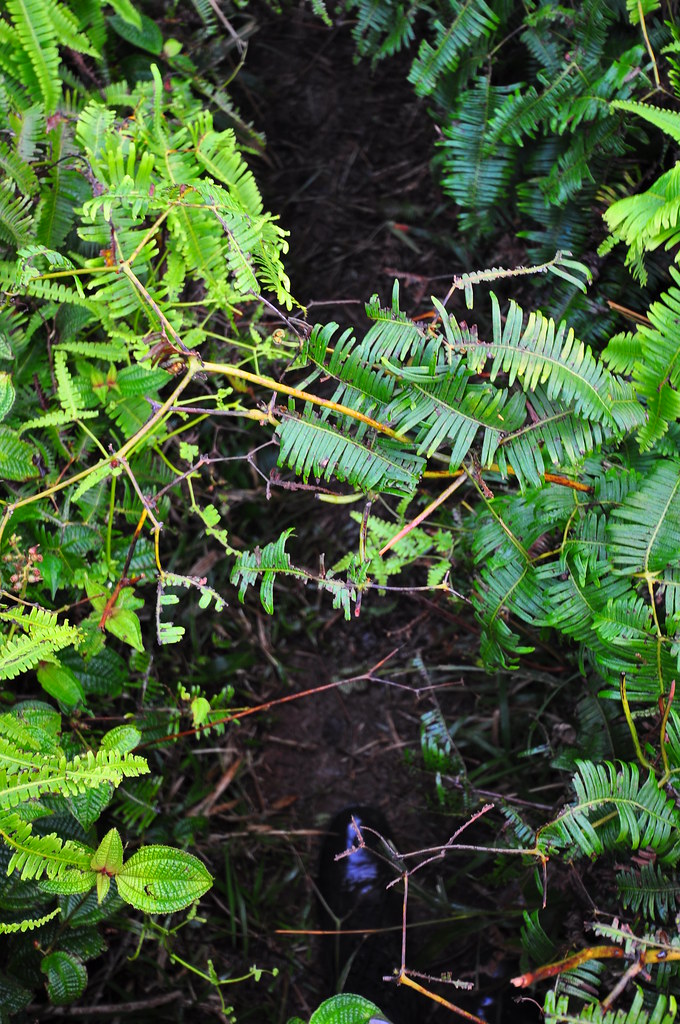

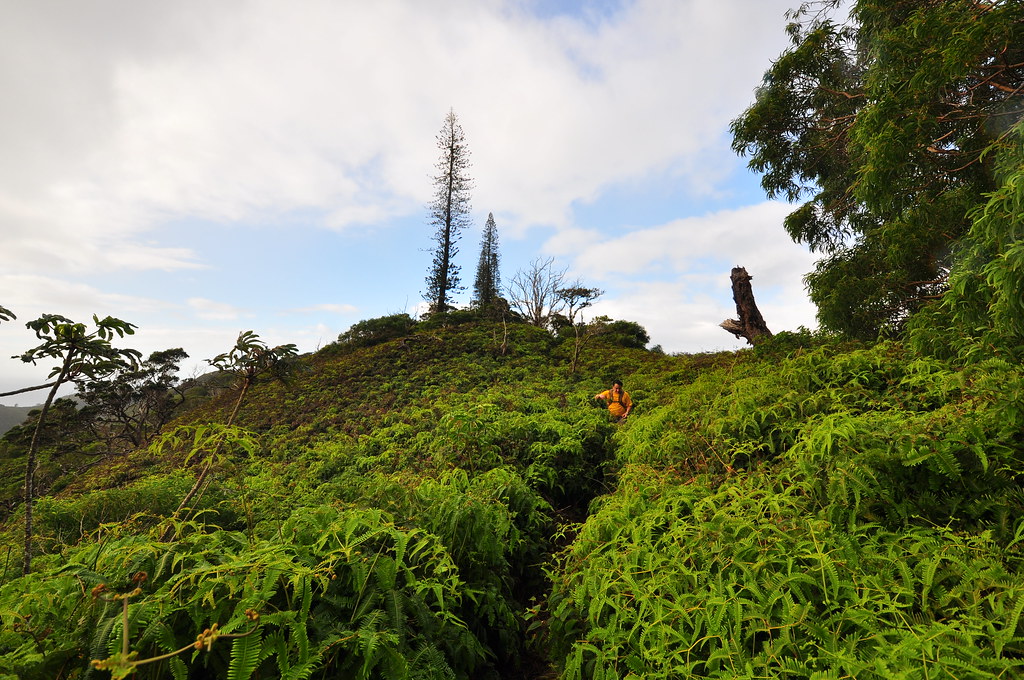
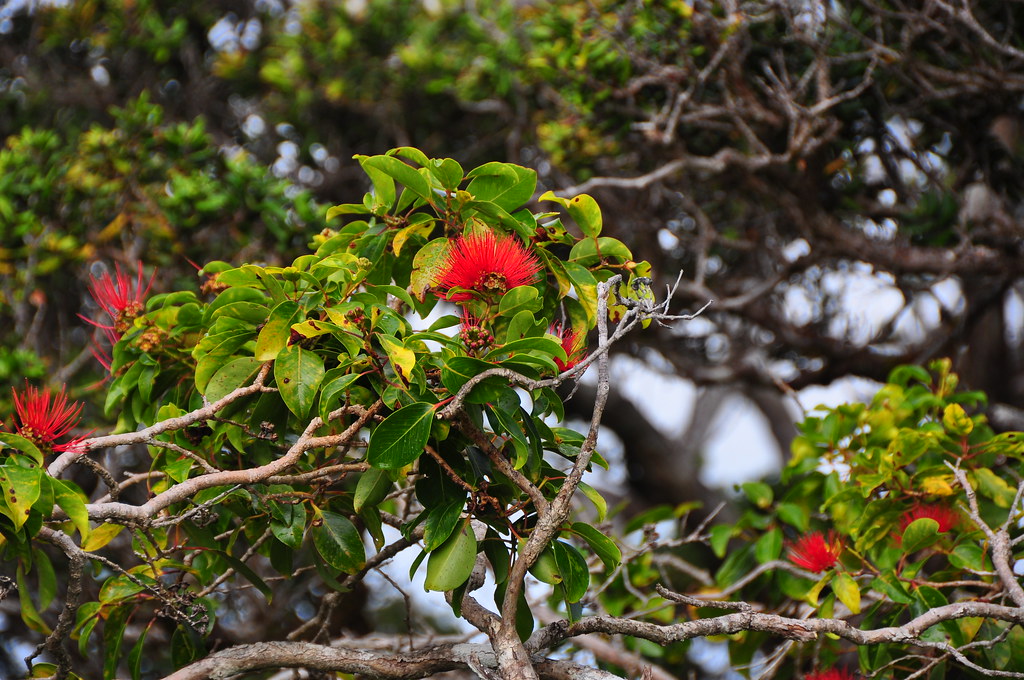

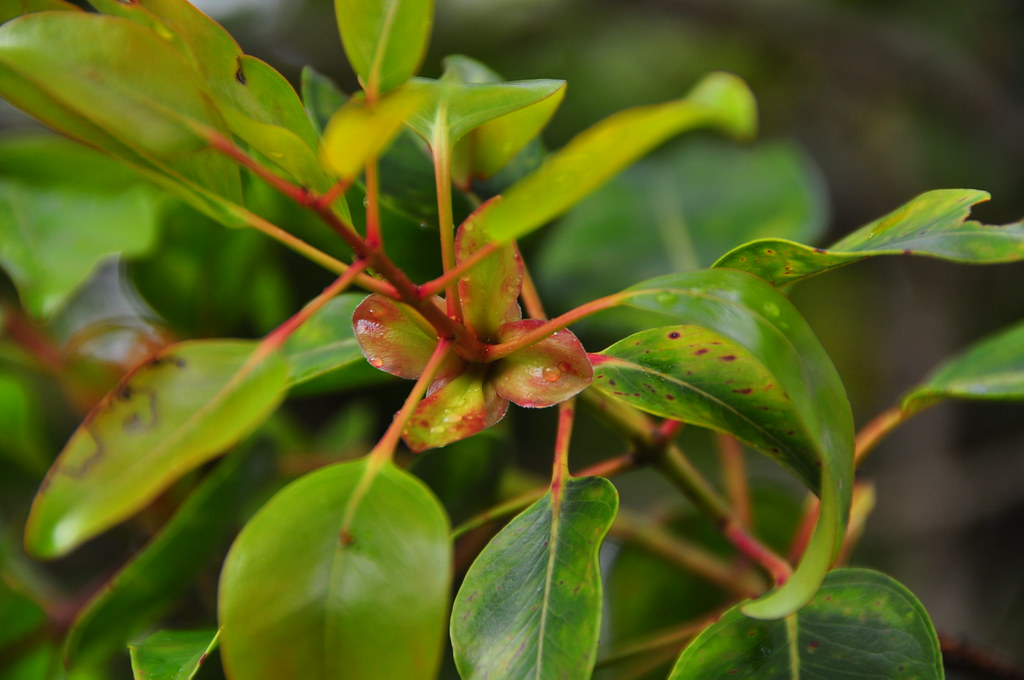
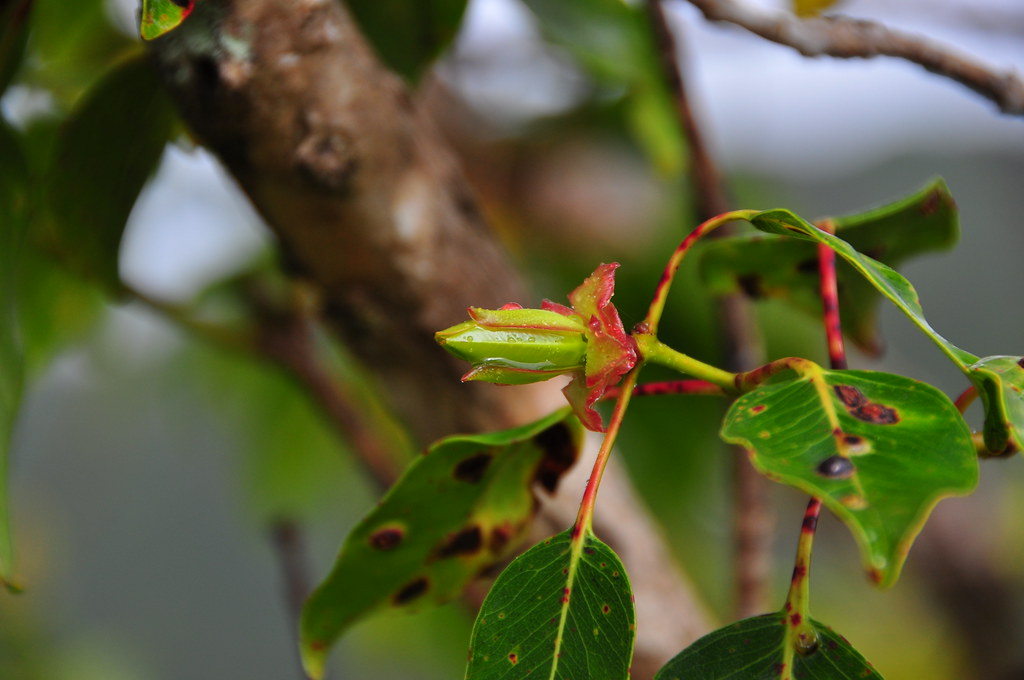





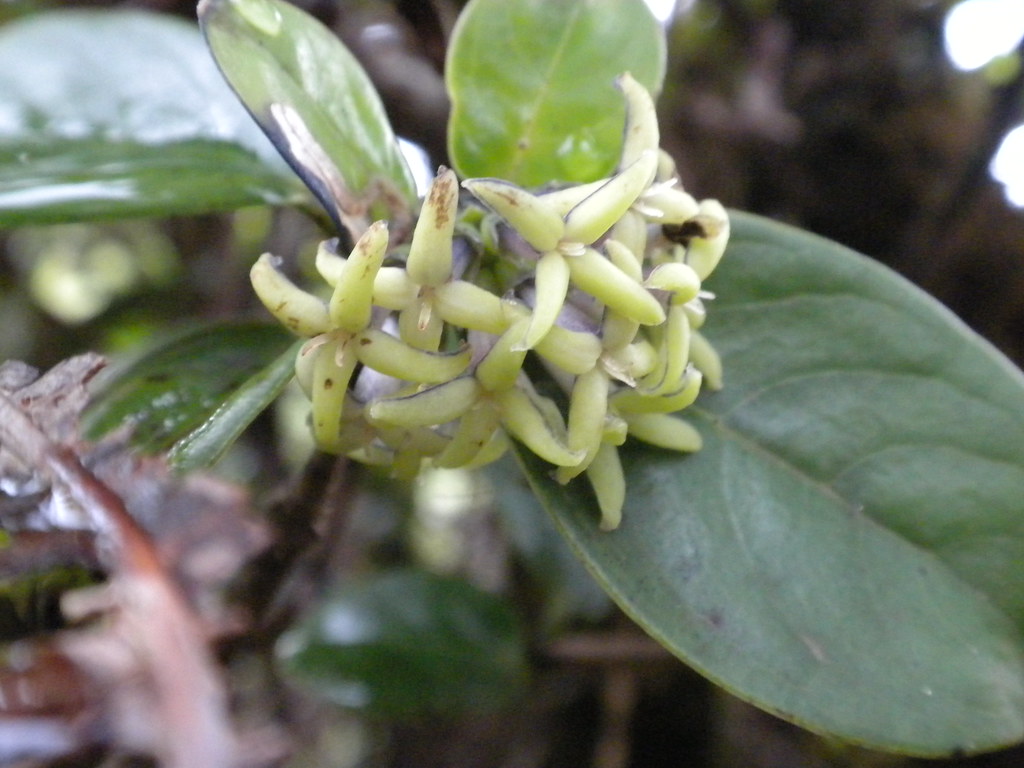

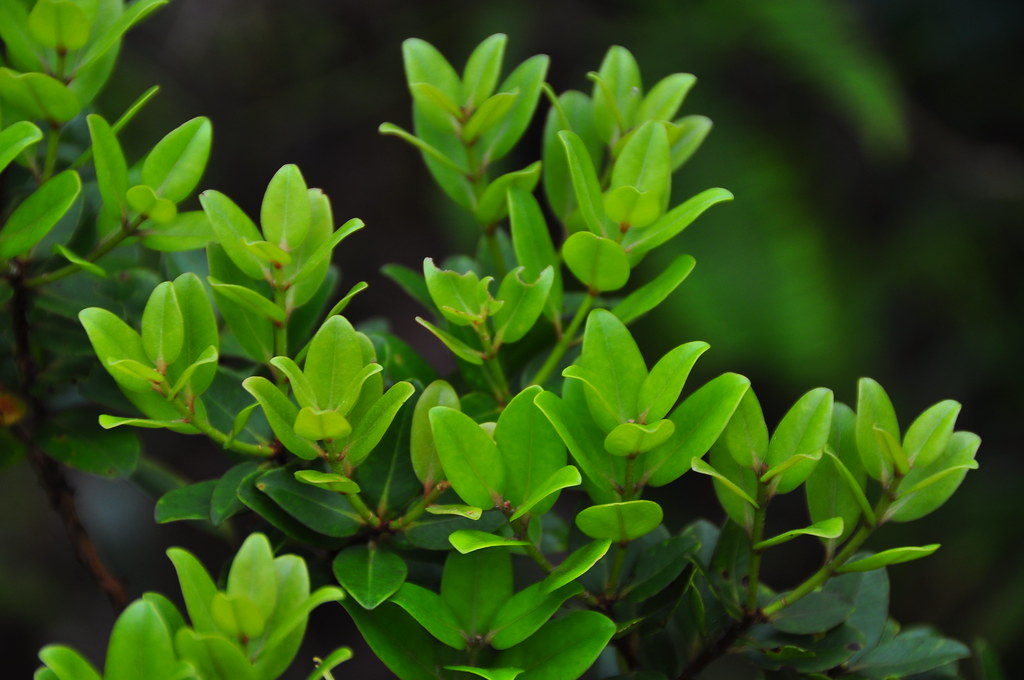

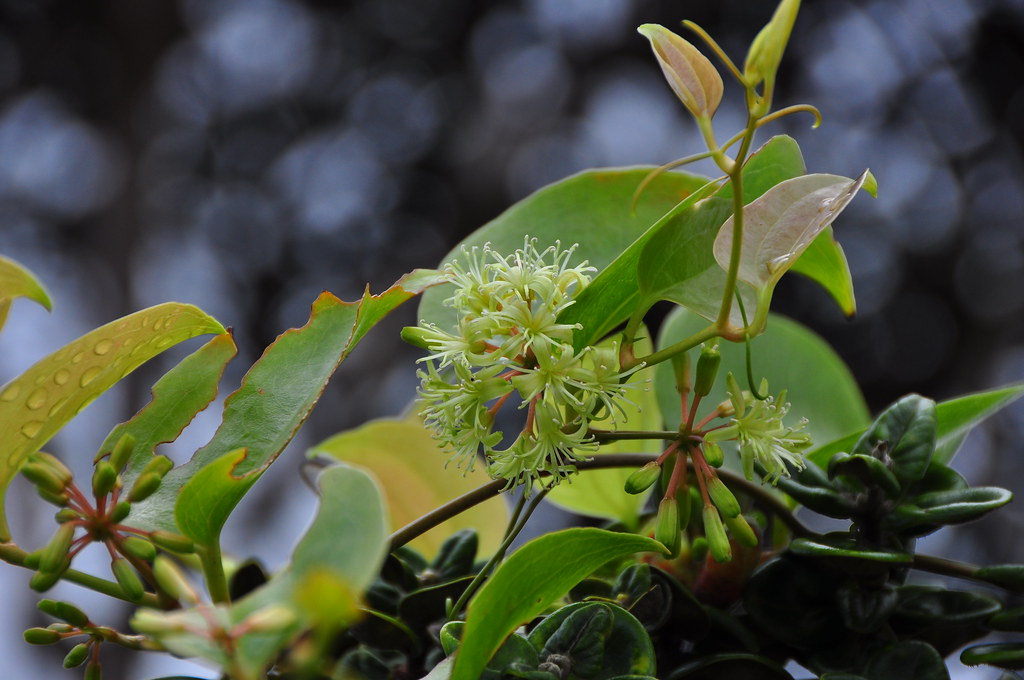
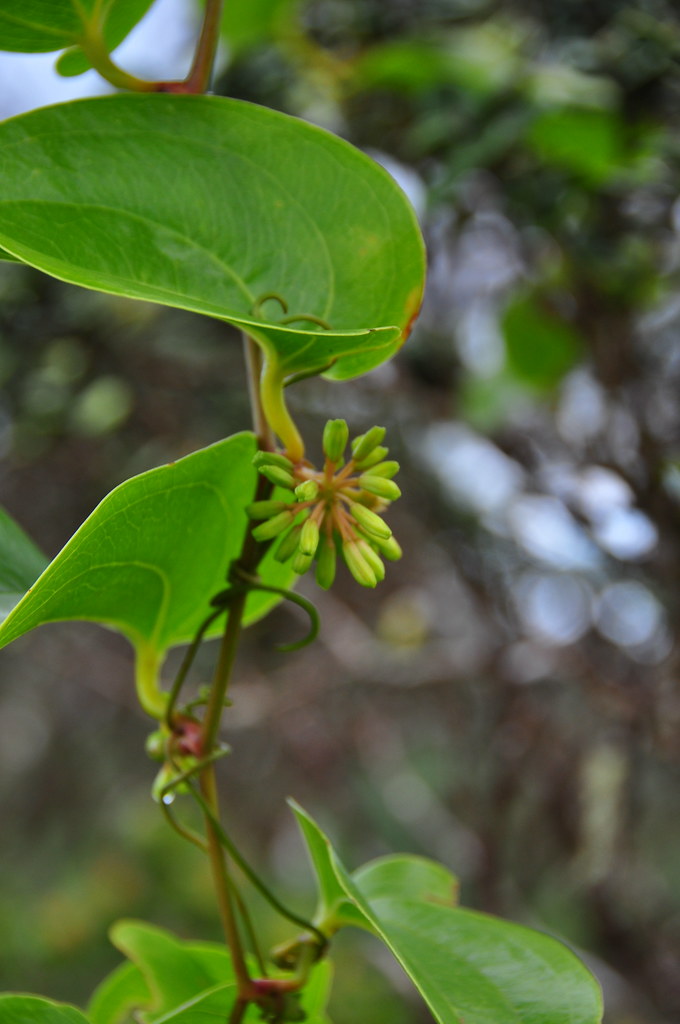
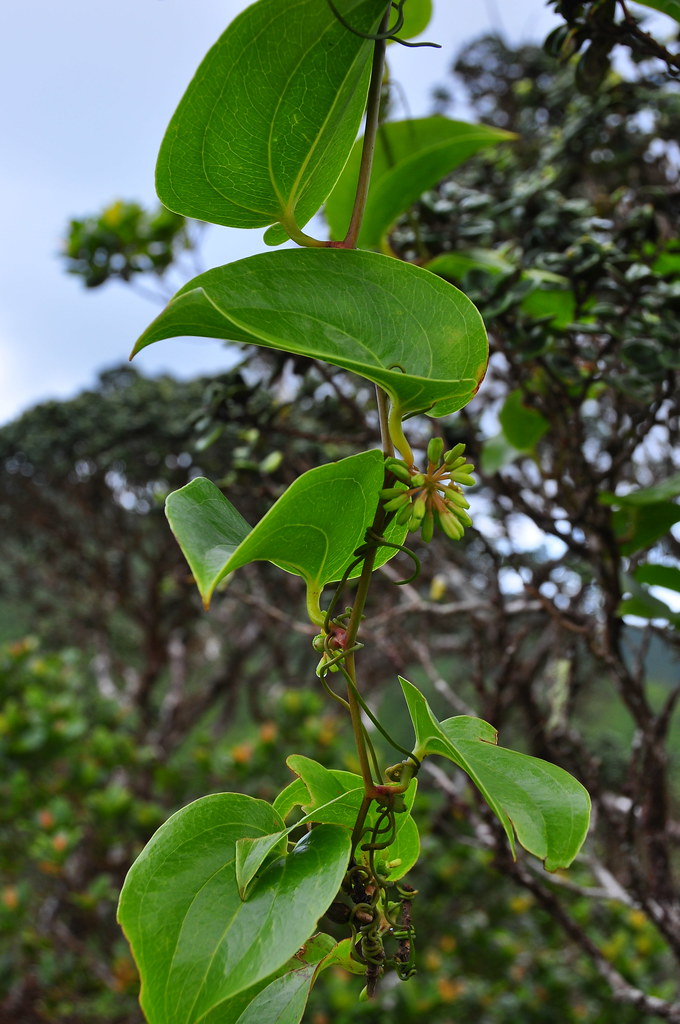


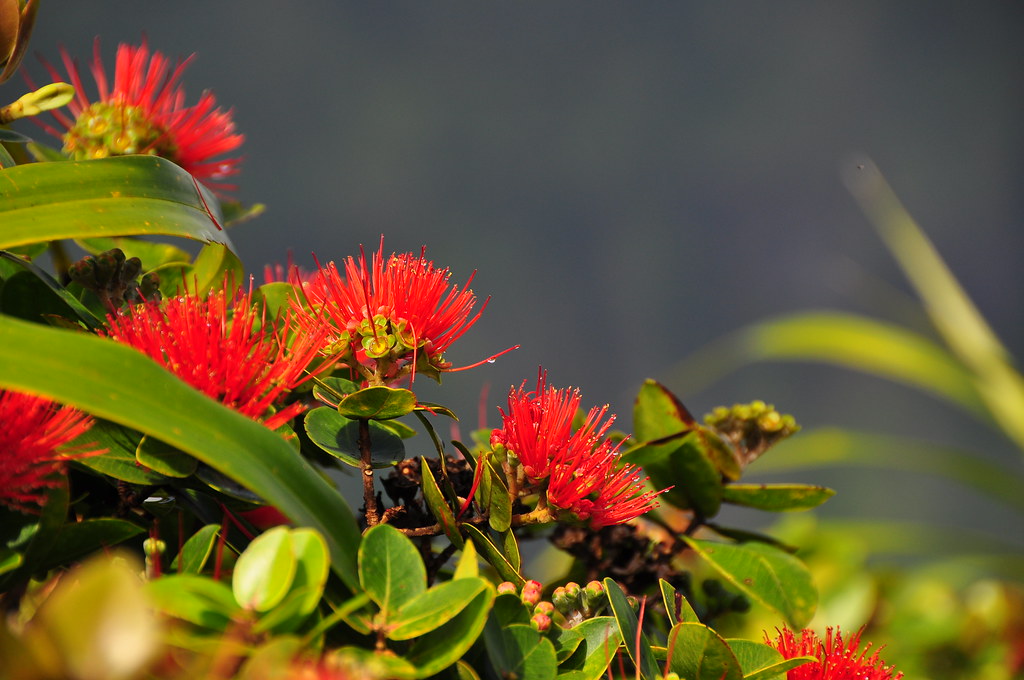

No comments:
Post a Comment